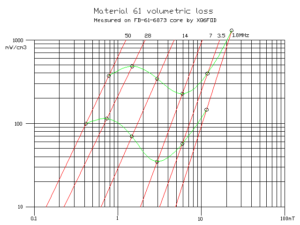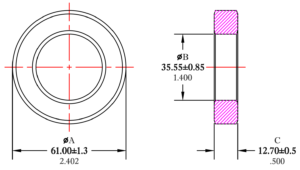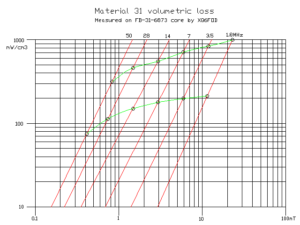Further to Amidon’s method of rating ferrite inductors and transformers, this article discusses some interesting measurements of ferrite toroids by Manfred Mornhinweg (Mornhinweg 2019).
Mornhinweg ferrite core measurements – #31 discussed his measurements of a #31 suppression sleeve.
Above are his measurements of a FB-61-6873 sleeve. Essentially there are two measurements at each frequency, and the expected flux density B is in the ratio of approximately 2:1. He has fitted a straight line on a log/log graph to the measurements at each frequency. The similarity of the slopes is not unexpected, and is a tribute to his experiment design, execution and calculations. Continue reading Mornhinweg ferrite core measurements – #61







